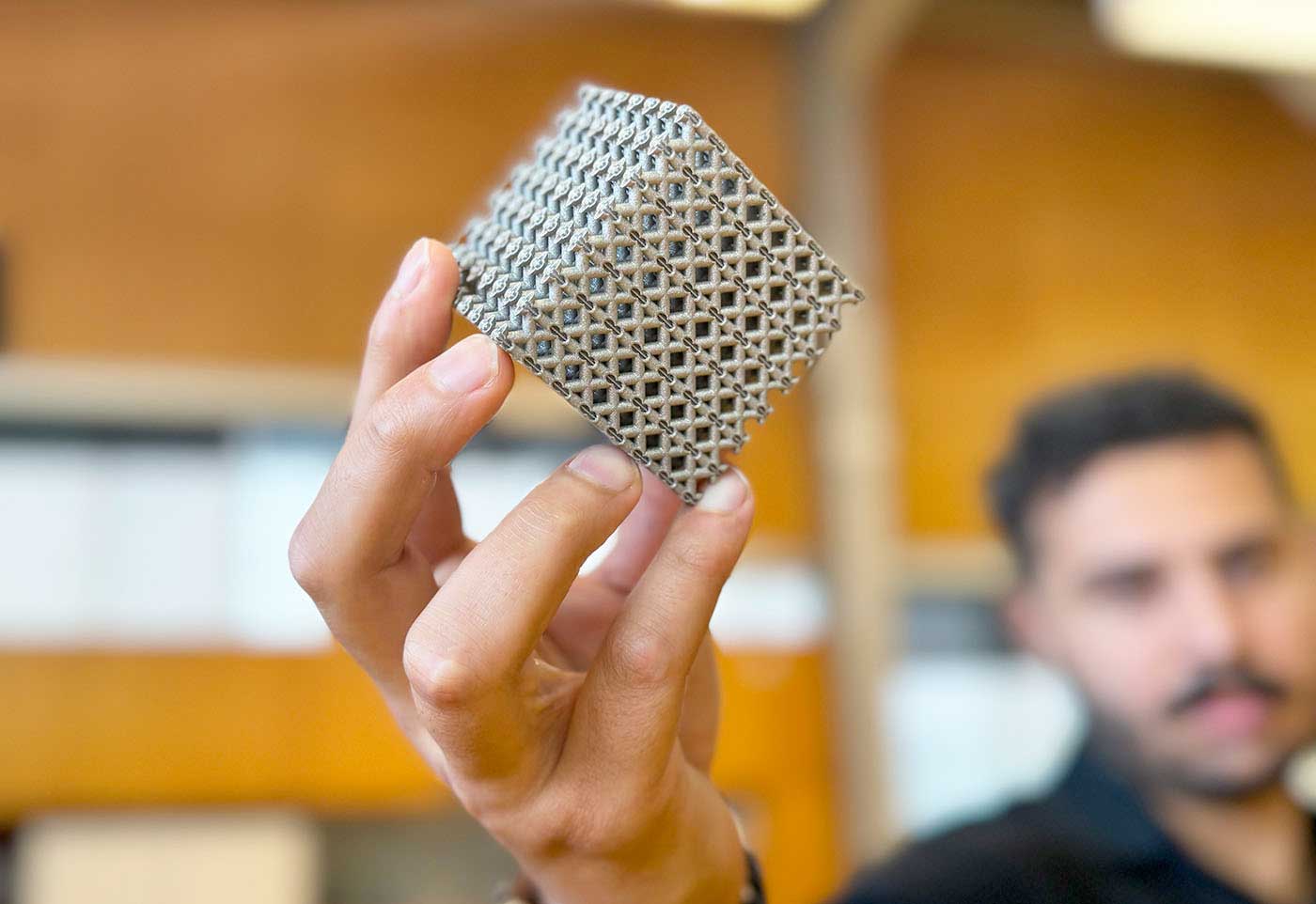A 3D-printed ‘metamaterial’ developed by RMIT University researchers, which has a strength-to-weight ratio not commonly found in nature or manufacturing, could transform the manufacture of everything from medical implants to aircraft or rocket parts.
The inspiration for the lattice structures originally comes from nature, such as the strong, hollow stems of the Victoria water lily or the robust organ pipe coral (Tubipora musica). They combine lightness with strength.
However, according to Ma Qian, Distinguished Professor at RMIT, replicating these “cellular structures” in metals has so far been a challenge due to manufacturability issues and stress concentrations within the hollow struts, often leading to premature failures.
“Ideally, the stress in all complex cellular materials should be evenly spread,” Qian explained. “However, for most topologies, it is common for less than half of the material to mainly bear the compressive load, while the larger volume of material is structurally insignificant.”
These challenges could be tackled innovatively through the use of 3D printing. The research group optimized a new type of lattice structure that distributes stress more evenly and thus increases strength and structural efficiency.
“We designed a hollow tubular lattice structure that has a thin band running inside it. These two elements together show strength and lightness never before seen together in nature,” said Qian. “By effectively merging two complementary lattice structures to evenly distribute stress, we avoid the weak points where stress normally concentrates.”
The design was 3D printed at RMIT’s Advanced Manufacturing Precinct using laser powder bed fusion, a process in which layers of metal powder are fused together by a high-powered laser beam. The tests showed that the printed design – a titanium lattice cube – was 50% stronger than the strongest cast magnesium alloy WE54 previously used in aerospace for similarly dense applications.
Jordan Noronha, lead author of the study and PhD student at RMIT, emphasizes: “Compared with the strongest available cast magnesium alloy currently used in commercial applications requiring high strength and light weight, our titanium metamaterial with a comparable density was shown to be much stronger or less susceptible to permanent shape change under compressive loading, not to mention more feasible to manufacture.”
The research group plans to further refine the material and explore applications in higher temperature environments. Although it can currently withstand temperatures of up to 350°C, it could withstand up to 600°C with more heat-resistant titanium alloys for aerospace or firefighting drone applications.
Industrial application could take some time as the technology to produce this new material is not yet widely available.
Technical Director of RMIT’s Advanced Manufacturing Precinct, Distinguished Professor Milan Brandt, said: “Our approach is to identify challenges and create opportunities through collaborative design, knowledge exchange, work-based learning, critical problem-solving and translation of research.”
Subscribe to our Newsletter
3DPresso is a weekly newsletter that links to the most exciting global stories from the 3D printing and additive manufacturing industry.






















